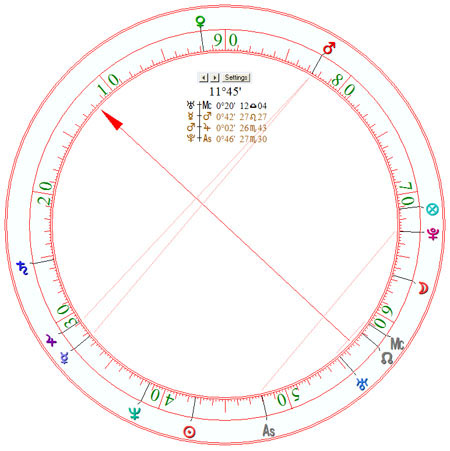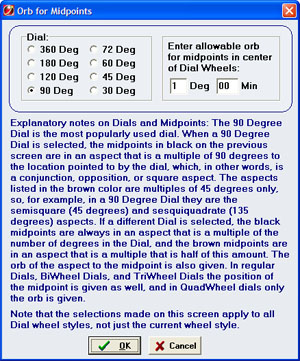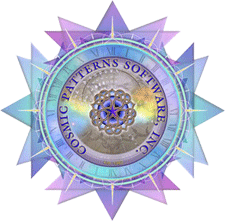| |
|
|
 ABOUT
SIRIUS :
Sirius includes with everything that is in the Kepler program
PLUS MORE! ABOUT
SIRIUS :
Sirius includes with everything that is in the Kepler program
PLUS MORE!
Click on
the links below to view more features:
|
|
|
 SUMMARY
OF SIRIUS FEATURES THAT ARE NOT IN KEPLER SUMMARY
OF SIRIUS FEATURES THAT ARE NOT IN KEPLER |
OTHER
SPECIAL FEATURES:
- Ancient Western
- Automatic Rectification
Assist. Very fast and easy to use.
- Hellenestic
- Page Designer, a true
drag and drop option
- Other Chart Wheels
- Electional Astrology
- AstroSignature
- Special Nakshatra Symbols & Wheel
- Graphic Ephemeris, Text Ephemeris, Asteroids Ephemeris, Star
Catalogue, Moon Calendar, Void of Course Moon Listing, Planetary
Ingresses
- Lifetime Returns
- Lifetime Progressed Lunation, Ingress, and Station Listing
- AstroCalendar
- Business Manager
- Fridaria, Profection, Huber
Age Point
- Hellinistic Zodiacal Releasing
- TimeLords
- Primary Directions
- Medieval
- Van Dam Primary
- Financial (Gold & Silver)
- Planet Mandalas
- Track Hurricane Path
- SkyMap, Eclipse Map, AstroMap, Treasure Maps, Geodetic Maps,
etc.
- Uranian Astrology
- Complete Harmonic System
- Vedic: Chakra, Vargas, Bhukti,
Panchanga, Muhurta, Ashtakavarga, Gochara, Nakshatra, Upagrahas,
Bhava Arudha, Special Lagna, etc.
- Tithi Return
- Synastry: Midpoint Comparison, Harmonic Aspect, Compatibility
Scores, etc.
- Eclipse: Solar and Lunar
- Advanced Research Capability, create your own formula, etc.
- True drag and drop page designer. Very flexible and easy
to use. Customizing wheel is a blast.
- Unlimited note section
- Very flexible animated chart wheels including 90 degree dial
- Popup Wheel
- Phase Angle Return
- and much much more!
|
 PURCHASE
SIRIUS PURCHASE
SIRIUS |
 ORDER
BY PHONE: ORDER
BY PHONE:
1-800-779-2559
|
| |
|
|
 Sirius is
Simply The World's Most Powerful And Easiest To Use Astrology Software!
Extraordinarily Flexible and Customizable. Quickly Access The Charts And
Reports You Need, And Also Have A Sirius is
Simply The World's Most Powerful And Easiest To Use Astrology Software!
Extraordinarily Flexible and Customizable. Quickly Access The Charts And
Reports You Need, And Also Have A
Wealth of Additional Tools Available. |
 SIRIUS
90 DEGREE DIAL, ANIMATED: (from
Page 1) SIRIUS
90 DEGREE DIAL, ANIMATED: (from
Page 1)
 Shown
right is a sample of a regular 90 Degree Dial Wheel. Shown
right is a sample of a regular 90 Degree Dial Wheel.
The 90 degree dial is calculated by taking the position of a planet
and subtracting out multiples of 90 degrees.
For example, a planet at 20 degrees of Libra in 360 degree notation
is at 200 degrees, and subtracting multiples of 90 degrees (in
this case, 180 degrees) results in a 90 degree dial position of
20 degrees.
Planets that are conjunct, opposition, or square in the natal
chart are conjunct in a 90 degree dial. The 90 degree dial, therefore,
is useful when you want to see planets in hard aspect (that is,
conjunct, opposition, or square).
Planets that are semisquare or sesquiquadrate appear as opposition
in the 90 degree dial.
A 90 degree dial is
similar to a 4th harmonic chart. In both the 90 degree dial and
the 4th harmonic chart, for example, planets
that are conjunct, opposition, or square appear as conjunct. The
90 degree dial is easier to calculate manually.
 The
90 Degree Dial in Sirius is not only a chart wheel style that you
can view, but also a chart wheel that you can work with interactively: The
90 Degree Dial in Sirius is not only a chart wheel style that you
can view, but also a chart wheel that you can work with interactively:
- with
a Dial Pointer that you can move to see midpoint structures
to any point on the dial.
- When
a 90 degree dial is selected, the midpoints
in black on the previous screen are in an aspect that is
a multiple of 90 degrees to the location pointed to by
the dial, which, in other
words are the following aspects, a conjunction, opposition,
or square.
- The
aspects listed in brown color are multiple of 45 degrees only.
For example, in a 90 Degree Dial they are the semisquare
(45 degrees) and sesquiquadrate (135 degrees) aspects. You
can also select other
Dials such as the 120 Degree, 60 degree, etc. Dials.
- If
a
different dial is selected, the black midpoints are always
in an aspect
that is a multiple of the number of degrees in
the Dial, and the brown
midpoints are in an aspect that is a multiple that is
half of this amount.
- There
are 4 kinds of Dials: Regular, BiWheel, TriWheel, and
QuadWheel.
- Dial
can be 360 Deg, 180 Deg, 120 Deg, 90 Deg, 72 Deg, 60 Deg, 45
Deg, or 30 Deg
- The
orb of the aspect to the midpoints can be changed to any orb that
you want to use..
- In
regular Dials, BiWheel Dials, and TriWheel Dials
the position
of the midpoint is given as well, and in QuadWheel
Dials only the orb is given.
|
|
|
 COSMIC
PATTERNS SOFTWARE, INC.| WWW.ASTROSOFTWARE.COM
COSMIC
PATTERNS SOFTWARE, INC.| WWW.ASTROSOFTWARE.COM Sirius is
Simply The World's Most Powerful And Easiest To Use Astrology Software!
Extraordinarily Flexible and Customizable. Quickly Access The Charts And
Reports You Need, And Also Have A
Sirius is
Simply The World's Most Powerful And Easiest To Use Astrology Software!
Extraordinarily Flexible and Customizable. Quickly Access The Charts And
Reports You Need, And Also Have A![]() SIRIUS
90 DEGREE DIAL, ANIMATED: (from
Page 1) Creating a 90 degree dial in Sirius is extremely easy, fun,
SIRIUS
90 DEGREE DIAL, ANIMATED: (from
Page 1) Creating a 90 degree dial in Sirius is extremely easy, fun,  Shown
right is a sample of a regular 90 Degree Dial Wheel.
Shown
right is a sample of a regular 90 Degree Dial Wheel. The
90 Degree Dial in Sirius is not only a chart wheel style that you
can view, but also a chart wheel that you can work with interactively:
The
90 Degree Dial in Sirius is not only a chart wheel style that you
can view, but also a chart wheel that you can work with interactively: